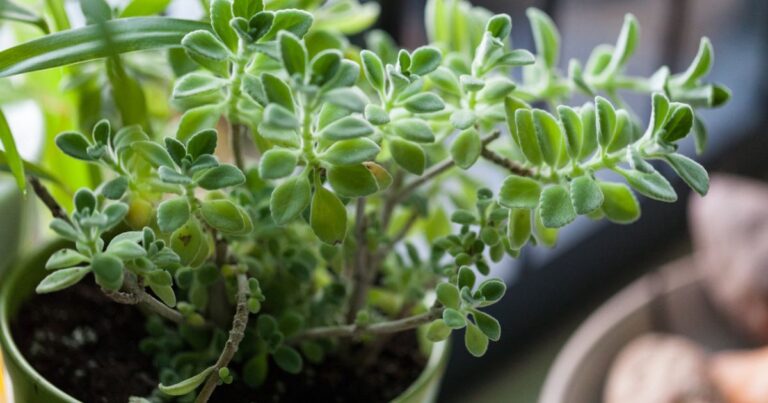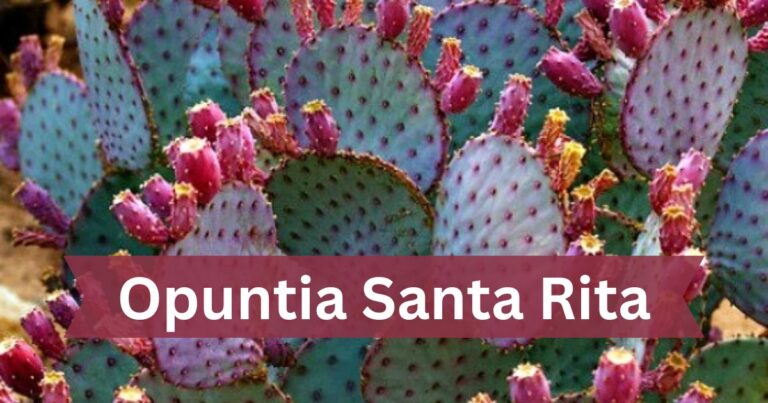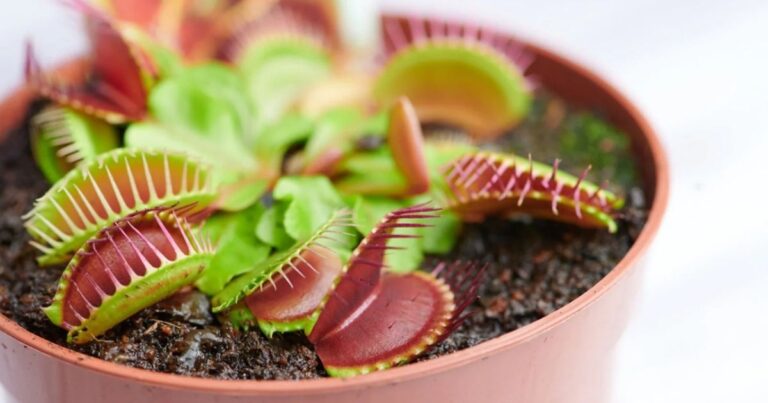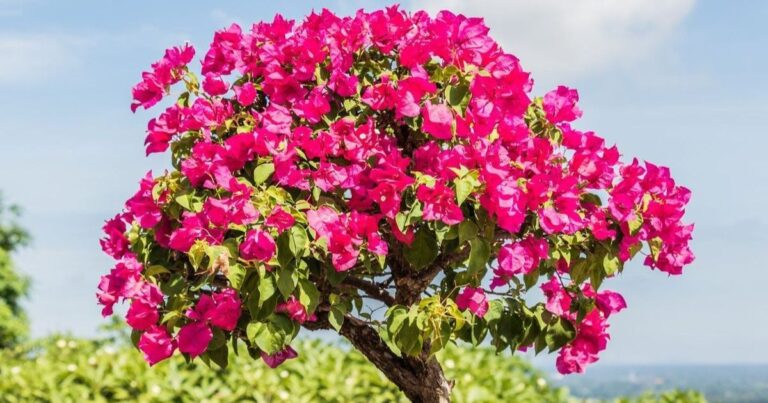Columbine Flower Care, Types, Growing And Planting
The delicate beauty of columbine flowers, with their uniquely shaped blooms and vibrant colours, has captivated gardeners and nature enthusiasts alike for centuries. With a name derived from the Latin word for dove, these charming plants not only grace gardens with their elegance but also symbolise an enduring connection to the natural world.
In this article I will cover the types of columbine flowers available, offering insights into their unique characteristics and growing habits. From choosing the right variety for your climate to mastering planting techniques that ensure vibrancy and longevity, I will also cover Columbine flower care, Planting, and Growing.
What Is Columbine Flower?
The columbine flower, scientifically known as (Aquilegia), Recognizable by its elegant spurred petals that resemble a graceful dancer’s gown, the columbine comes in various colours including deep blues, sunny yellows, and soft pinks. Columbines hold historical significance in various cultures. In mediaeval Europe, they symbolised love and fidelity, often appearing in romantic poems and artworks.

Columbines provide vital nectar for hummingbirds and bees during late spring when few other sources are available underscoring their value in supporting local ecosystems. With their rich heritage and ecological benefits, the columbine flower is much more than a beautiful addition to any garden.
Columbine Flower Types
These flowers, belonging to the genus Aquilegia, boast a stunning diversity that invites gardeners and enthusiasts alike into their enchanting world. I cover the top 8 types of Combine Flower.
Rocky Mountain Columbine Flower
The Rocky Mountain Columbine, scientifically named Aquilegia Coerulea, is a striking flower that captivates the hearts of those who encounter it. With its delicate, spurred petals and vibrant blue and white hues, this perennial not only offers visual delight but also plays a vital role in its high altitude ecosystem.
Flourishing in rocky terrain at elevations between 8,000 to 14,000 feet, this flower has adapted ingeniously to survive harsh conditions while providing sustenance for hummingbirds and essential pollinators.
Blue Columbine Flower
The Blue Columbine flower, real name (Aquilegia caerulea), is a captivating spectacle in gardens and wildflower meadows alike. With its delicate, spurred petals forming a charming bell like shape, this native plant of North America thrives at high altitudes, revealing its beauty against the backdrop of rugged mountain landscapes.

Blooming in late spring to early summer, these enchanting flowers not only attract pollinators like bees and hummingbirds but also symbolise resilience in harsh environments.
Purple Columbine Flower
The Purple Columbine Flower, with its delicate petals and striking hue, serves as both a botanical marvel and a symbol of resilience in gardens worldwide. This perennial favourite thrives in various conditions, showcasing a unique adaptability that can inspire even the most novice gardeners.
It is worth noting that these flowers not only enhance biodiversity but also bring a sense of serenity to outdoor spaces with their graceful sway in the wind. Planting them invites both beauty and biodiversity into your garden while reminding us of nature’s artistry at work.
Colorado Columbine Flower
The Colorado Columbine, scientifically known as (Aquilegia coerulea), holds a special place in the hearts of locals and nature enthusiasts alike. This stunning perennial flower showcases delicate blue and white petals that seemingly dance against the backdrop of the Rocky Mountains.
Beyond its breathtaking beauty, the Columbine is also embraced by Coloradans as a symbol of resilience; it thrives at high altitudes where harsh conditions prevail, offering a reminder that grace can flourish even in adversity.
Wild Columbine Flower
The wild columbine flower, scientifically known as (Aquilegia canadensis), captivates with its unique, bell-shaped blooms that nod gracefully on slender stems.

Found predominantly in North America’s forests and woodlands, this perennial beauty thrives in partial shade and adds a burst of colour wherever it grows. Its vibrant red and yellow petals attract a variety of pollinators, including hummingbirds, which have become essential for the plant’s reproductive success.
Red Columbine Flower
The Red Columbine (Aquilegia canadensis) is a native wildflower that enchants garden enthusiasts and pollinators alike. The delicate, tubular red flowers not only catch the eye but also serve as a beacon for hummingbirds, attracting them with their vibrant hue and sweet nectar.
These elegant blooms typically emerge in late spring to early summer, creating a stunning contrast against lush green foliage and transforming any landscape into a picturesque haven.
Pink Columbine Flower
The enchanting pink columbine flower, Real name is vulgaris, is a true gem of the garden, boasting delicate star-shaped blossoms that sway gently in the breeze.
Native to the temperate regions of North America and Europe, this perennial delight thrives in well drained soil and partial shade, making it an ideal choice for shaded nooks or woodland gardens.
Black Columbine Flower
he Black Columbine flower, known scientifically as (Aquilegia vulgaris) varieties, is a striking and enigmatic member of the Ranunculaceae family.

Unlike its more vibrant counterparts, this unique cultivar boasts deep, dark hues that range from rich purples to velvety blacks, creating an air of mystery in any garden setting. As twilight descends upon the garden, these flowers seem to absorb the fading light, offering a dramatic contrast against their green foliage.
Columbine Flower Planting
Planting Columbine flowers can transform any garden into a vibrant tapestry of colours and textures. To set the stage for their success, choose a location that offers partial shade; they thrive in well drained soil enriched with organic matter. Before planting, consider mixing in compost to boost soil fertility and moisture retention.
Columbine flower seeds
Columbine flower seeds, Native to a variety of regions across North America and Europe, these seeds thrive in diverse conditions, from meadows to mountain slopes.

Their unique structure aids in self-dispersal, allowing them to colonise new areas successfully while providing ecological benefits such as attracting pollinators like bees and hummingbirds.Growing Columbine from seed can be an immensely rewarding experience for gardeners seeking a burst of colour in shady spots or rocky gardens.
Columbine Flower Leaves
Columbine flower leaves are as fascinating as the blooms themselves, showcasing a unique trifoliate structure that distinguishes them from many other ornamental plants. Each leaf features intricately lobed segments, resembling delicate fingers reaching out to gather sunlight.
These vibrant green leaves not only provide an appealing backdrop for the striking flowers but also play a crucial role in the plant’s overall health. Their shape and arrangement allow for optimal light capture while displaying resilience against varying weather conditions.
How To Grow Columbine Flower?
Growing columbine flowers can be a rewarding endeavour, as they bring a unique allure with their delicate, intricate blooms. To start, choose a location that offers partial shade; these flowers prosper in cooler conditions and can be sensitive to intense sunlight. Prepare the soil to ensure it is well-draining yet rich in organic matter. Consider mixing compost or leaf mould into the ground before planting.
Columbine Flower Care
Columbine flowers thrive best in well drained soil rich in organic matter. To achieve the perfect growing environment, consider mixing compost into your flower beds to boost nutrient content while ensuring excellent drainage.
These perennials prefer a sunny location but can also flourish in partial shade, making them versatile additions to various garden settings. Be cautious of overly wet conditions; soggy roots are a surefire way to invite root rot and diminish their enchanting bloom.

Regular deadheading is essential for maintaining the beauty of your columbines throughout the growing season. By snipping away spent flowers, you encourage new growth and potentially prolong blooming times.
Columbines can self seed freely, if you want a more controlled garden or wish to prevent overcrowding, it’s wise to trim off seed heads before they scatter seeds across your landscape.
If you’re looking at companion planting options, consider pairing these delicate blooms with ferns or hosts, their contrasting foliage creates dynamic visual appeal while satisfying differing light requirements in shaded areas of your yard.
Columbine Flower Height And Size
Typically, these perennials range from 12 to 36 inches tall, with some species showcasing particularly robust growth that can reach up to 48 inches under ideal conditions.
The size and spread of columbine plants also vary based on the species and environmental factors. They feature delicate blooms that span around 1 to 3 inches in diameter, each petal adorned with distinctive spurs that extend outward like graceful flutes.
Uses Of Columbine Flower
- Culinary Delights: The petals of columbines can be used to garnish salads and desserts, adding a unique flavour and aesthetic appeal.
- Traditional Medicine: Historically, various indigenous tribes have utilized parts of the plant for their supposed medicinal properties to treat ailments such as fevers or respiratory issues.
- Natural Dye Source: Columbine flowers can produce natural dyes in shades ranging from yellow to orange, making them an eco-friendly option for textile artisans.
- Pollinator Attractor: These blossoms are known to attract bees, butterflies, and hummingbirds, playing a critical role in supporting local ecosystems.
- Symbolic Presence: In many cultures, columbines symbolise love and fidelity—making them popular choices for wedding bouquets or romantic gifts.

- Wildflower Gardens: As perennial plants that flourish in diverse soil conditions, columbines are often used in wildflower gardens for their resilience and beauty.
- Companion Planting: They have been valued in garden planning as companion plants that help deter pests while enhancing other flowering plants’ growth through biodiversity.
- Educational Tool: Due to their distinct morphological features (like layered petals), they serve as excellent specimens for botanical study and educational demonstrations on plant development.
- Artistic Inspiration: Many artists find inspiration in the enchanting forms of columbines; these flowers frequently make appearances in paintings due to their intricate structures and vivid colors.
- Horticultural Therapy: Gardening with Columbine flowers has therapeutic effects; engaging with nature through planting can improve mental well being offering solace amid life’s challenges.
Tips And Fun Facts About Columbine Flower
Diverse Colours: Columbine flowers come in a stunning array of colors, including blue, purple, red, white, and yellow. This versatility makes them perfect for any garden scheme or floral arrangement.
Unique Structure: The intricate shape of the columbine flower resembles a small bird or bell, with its petal spurs adding to its visual appeal. This unique structure not only captivates observers but also attracts specific pollinators like hummingbirds.
Herbal History: Historically, columbine was used in traditional herbal medicine. Native Americans recognized its properties and used it for various ailments; however, caution is advised as some parts can be toxic.
Symbolism: In the language of flowers, columbines symbolize love and fidelity. Incorporating them into bouquets can convey deep emotional sentiments during weddings or special occasions.
Deer Resistant: Triumphantly thriving in gardens where deer roam freely, columbine plants are often left untouched due to their bitter taste. A perfect solution for those battling these persistent nibblers!
Attracting Wildlife: Planting columbines not only beautifies your space but also encourages biodiversity—they attract bees and butterflies essential for ecological health.
cultivation Tips: For optimal growth, plant columbines in well-drained soil with partial shade; this mimics their native woodland environment and enhances flowering potential.
Annual vs Perennial: While some species are perennial—returning year after year—others behave as biennials or annuals depending on climate conditions. Understanding these variations helps gardeners make effective choices.
Columbine Flower Vs Foam Flower
The Columbine, with its delicate, spurred blooms in a rainbow of colors, captivates passersby with an ethereal quality. This perennial favorite not only attracts pollinators like bees and hummingbirds
Foam Flower understated elegance speaks volumes through its lush green foliage paired with charming clusters of tiny white or pink blossoms that resemble frothy clouds. Often found adorning shaded woodland areas or moist garden beds, this hardy plant serves as an excellent ground cover while providing essential camouflage for emerging spring blooms.
Conclusion
Columbine flower care involves understanding their specific needs, including soil type and watering schedules, to ensure they thrive in your garden. With various types available, from the classic Aquilegia caerulea to hybrids boasting a spectrum of colours, there is a perfect columbine for every landscape.
By following proper planting techniques and providing adequate sunlight and space, gardeners can enjoy a stunning display of these delicate blooms throughout the spring and summer months.







